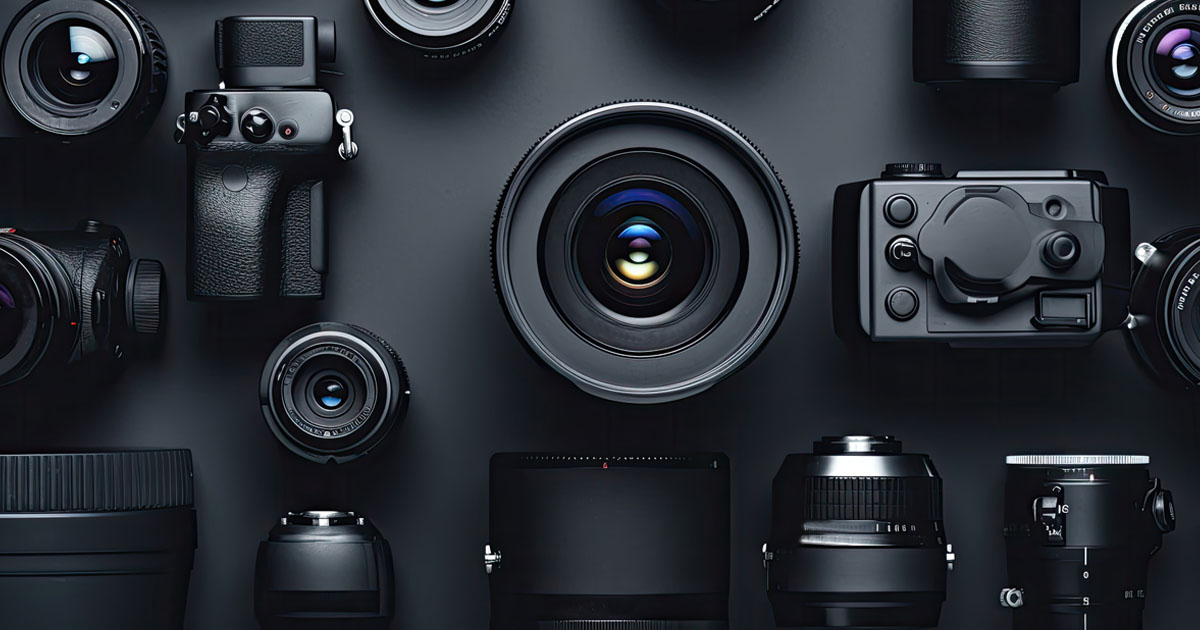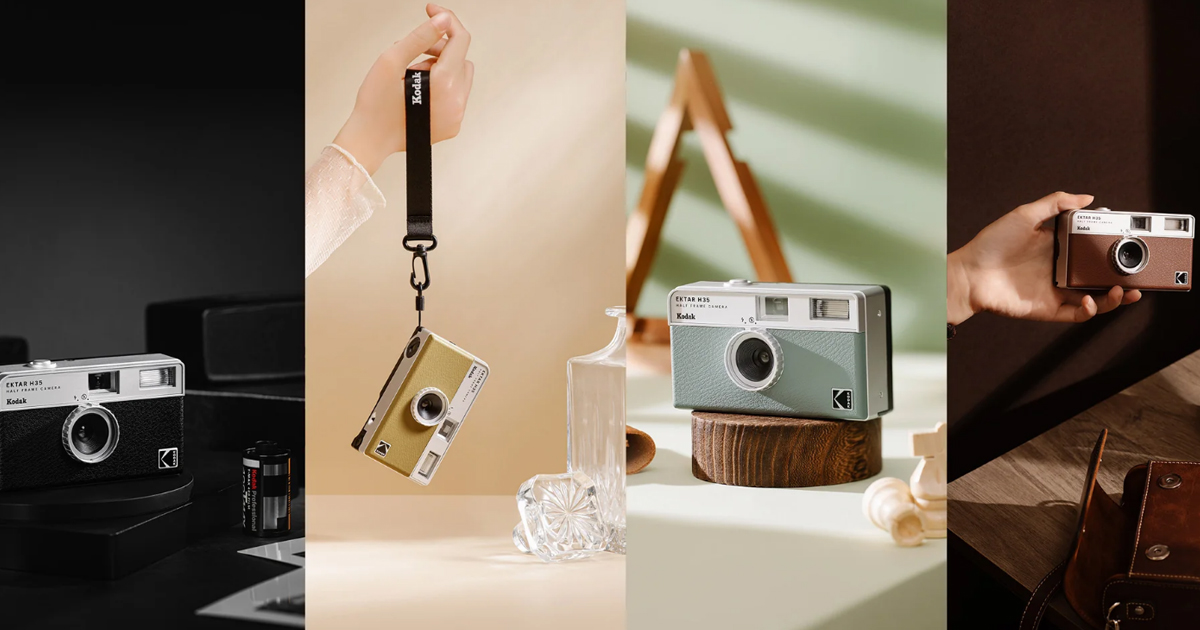In the digital age, where every moment can be captured instantly on our smartphones, one might wonder why anyone would still buy a kodak film camera.
In the era of filters and instant gratification, there’s something undeniably authentic about using a film camera. Each click of the shutter captures a moment in its most valid form, with no digital manipulation or filters. The resulting photographs have a raw and timeless quality often missing in digital images.
Kodak film camera has a long history of producing durable and reliable cameras. Many vintage Kodak film cameras are still operational today, a testament to their build quality. These cameras are often considered heirlooms, passed down through generations.
Table of Contents
ToggleKodak Film Cameras: A Comprehensive Review
In the world of photography, where digital cameras and smartphones dominate, there’s something undeniably charming about film cameras. They evoke a sense of nostalgia, reminding us of a time when every click of the shutter counted. Among the plethora of film camera options available, Kodak has always stood out as a trusted brand. In this article, we present an in-depth review of Kodak film cameras, including the H35 half frame, M38, M35, Ultra F9, and i60. Our goal is to provide you with all the information you need to make an informed choice for your next photography adventure with the kodak film cameras.
Kodak Film Camera H35 Half Frame
The Kodak H35 half frame camera is a true classic. It boasts a half-frame format, meaning it captures two images on a single 35mm frame. This feature allows you to take twice as many shots as a regular 35mm camera without changing the roll of film. The H35 is equipped with a fixed focus lens, making it easy for beginners to use. Its simple design, combined with the half-frame format, is perfect for capturing candid moments.
Tech Specs:
- Film-saving: You can have twice as many images per roll. For example, a film roll with 36 exposures can yield around 72 half-frame photos – doubled!
- Lightweight: The pocket-size camera is light and tiny, and hence convenient for you to bring along daily.
- Built-in Flash: Turning on the flash by adjusting the silver ring around the lens so that you can use KODAK EKTAR H35 during days and nights, outdoor and indoor.
- Four colours: Black, brown, sand and sage. Neat and natural.
Check out the Price
Worldwide:
India:
Kodak Film Camera M38
The Kodak M38 is another gem in Kodak’s film camera lineup. It features a compact design, making it highly portable and ideal for travel photography. The M38 comes with a fixed 35mm lens, ensuring sharp and vivid images. One standout feature is its manual film advance, giving you complete control over your shots. Whether you’re a seasoned photographer or just starting, the M38 offers a delightful shooting experience.
Tech Specs:
- Film Format: 135 Film (24x36mm)
- ISO: 200/400
- Optics Lens: 31mm
- F: 10, 1 element
- Focusing: Focus Free, 1M – Infinite
- Shutter Speed: 1/120s
- Film Transport: Manual Wind & Rewind
- View Finder: 70%
- Power Source: 1AAA – Alkaline Battery
- Dimensions (mm): 114(W) x (63(H) x 35(D)
- Weight: 116.5gms
- Main Plastic Material: ABS
Check out the Price
Worldwide:
India:
Kodak Film Camera M35
If you’re looking for a budget-friendly option without compromising on quality, the Kodak M35 is worth considering. This camera is designed for simplicity, the lightest camera in the series, making it a fantastic choice for beginners. With its fixed focus lens and easy-to-use controls, you can quickly capture beautiful moments without the hassle of complex settings. The M35 is a reliable companion for everyday photography.
Tech Specs:
- Film Format: 135 Film (24x36mm)
- ISO: 200/400
- Optics Lens: 31mm
- F: 10, 1 element
- Focusing: Focus Free, 1M – Infinite
- Shutter Speed: 1/120s
- Film Transport: Manual Wind & Rewind
- View Finder: 70%
- Power Source: 1AAA – Alkaline Battery
- Dimensions (mm): 114(W) x (63(H) x 35(D)
- Weight: 100 gms
- Main Plastic Material: ABS
Check out the Price
Worldwide:
India:
Kodak Film Camera Ultra F9
For those who crave versatility and precision, the Kodak Ultra F9 is a top contender. This camera allowing you to adapt to various shooting scenarios. Whether you’re photographing landscapes or portraits, the Ultra F9 delivers sharpness and clarity. Its autofocus system ensures that your subjects are always in focus, even in challenging lighting conditions.
Tech Specs:
- Film Format: 135 Film (24x36mm)
- ISO: 200/400
- Optics Lens: 31mm
- F: 9, 1 element
- Focusing: Focus Free, 1M – Infinite
- Shutter Speed: 1/120s
- Built-in Flash Push Switch – 120uf
- Film Transport: Manual Wind & Rewind
- View Finder: 70%
- Power Source: 1AAA – Alkaline Battery
- Dimensions (mm): 119(W) x (67(H) x 44(D)
- Weight: 170 gms
- Main Plastic Material: ABS
Check out the Price
Worldwide:
India:
Kodak Film Camera i60
The Kodak i60 is the perfect choice for enthusiasts seeking a professional-grade film camera. It comes with a three-stop ISO settings. The i60 offers complete manual control, allowing you to fine-tune settings like aperture and shutter speed. With its rugged build, this camera is built to withstand the rigors of outdoor photography. If you’re serious about film photography, the i60 won’t disappoint.
Tech Specs:
- Film Format: 135 Film (24x36mm)
- ISO: 200/400/800
- Optics Lens: 31mm
- F: 10, 1 element
- Focusing: Focus Free, 1M – Infinite
- Shutter Speed: 1/125s
- Flash: Press & Pop-up Flash – 15s recycle time (120uf)
- Film Transport: Manual Wind & Rewind
- View Finder: 70%
- Power Source: 1AAA – Alkaline Battery
- Dimensions (mm): 112(W) x 64.6(H) x 46(D)
- Weight: 144.3 gms
- Main Plastic Material: ABS
Check out the Price
Worldwide:
India:
Differences between the Digital Cameras & Kodak Film Cameras:
The main differences between digital cameras and Kodak film cameras revolve around the medium used for capturing images, the immediacy of results, the cost structure, and the aesthetic qualities of the photographs. Both have unique advantages and appeal, catering to different preferences and photography styles.

Digital Cameras:
- Image Processing: Digital cameras capture images electronically, utilizing sensors to convert light into digital data. This data is then processed by an internal computer, allowing for real-time adjustments and enhancements. This means you can instantly review and retake shots.
- Instant Results: With digital cameras, you can view your photos immediately on the camera’s LCD screen. This instant feedback enables you to make corrections or adjustments on the spot, ensuring you get the shot you want.
- Storage: Digital cameras store images on memory cards or internal storage. This eliminates the need for physical film rolls and allows you to take hundreds or even thousands of photos on a single card.
- Editing: Digital photos can be easily edited using software like Adobe Photoshop or Lightroom. This flexibility allows for extensive post-processing, from adjusting exposure to removing imperfections.
- Cost Efficiency in the Long Run: While digital cameras may have a higher upfront cost, the absence of film and processing expenses over time can make them more cost-effective.
- Instant Sharing: With digital cameras, you can instantly share your photos online through social media, email, or cloud storage, making it easy to connect with friends and family.
Kodak Film Cameras:
- Film Medium: Kodak film cameras, as the name suggests, use traditional film rolls to capture images. The film contains light-sensitive chemicals that react to exposure, creating a latent image.
- Limited Shots: Film rolls typically have a limited number of exposures, commonly 24 or 36 frames per roll. This encourages photographers to be more selective and thoughtful when taking shots.
- No Instant Feedback: Unlike digital cameras, Kodak film cameras do not provide immediate previews. You must finish the roll and then develop it to see your photographs.
- Analog Aesthetic: Film cameras produce a unique, analog aesthetic characterized by grain, color shifts, and imperfections. Many photographers appreciate this vintage and artistic quality.
- Development Time: After shooting a roll of film, you must take it to a lab for development, a process that can take several hours to several days, depending on where you go.
- Physical Prints: With film cameras, you receive physical prints of your photos, which can be cherished as tangible keepsakes. These prints can be scanned for digital sharing if desired.
- Limited Editing: Editing film photos is possible but generally more challenging and requires specialized equipment. Many photographers prefer to embrace the unaltered nature of film.
This gadget world is dominated by a variety of cameras & different brands; Kodak film cameras offer a refreshing and authentic approach to photography. They tap into our nostalgia, provide unparalleled image quality, and continue to be cherished by photographers and collectors alike.

Conclusion:
So, why choose a Kodak film camera? These cameras are not just tools; they are time machines that transport you back to the golden age of photography. They capture the essence of moments, preserving memories in a tangible and timeless form.
If you’re ready to embark on a photographic journey with a Kodak film camera, we hope this review has been informative and helpful in making your decision. Each of these (Kodak) cameras has its own charm, and the right one for you depends on your preferences and photography style.
In conclusion, Kodak film cameras continue to hold a special place in the hearts of photographers worldwide. Their enduring legacy and commitment to quality make them a choice you won’t regret.
So, go ahead, pick up a Kodak film camera, and start creating your own visual masterpieces. Happy shooting!
FAQs
1. What is a Kodak Film Camera?
A Kodak film camera is a traditional analog camera that uses photographic film to capture images. It relies on chemical processes to develop photos, providing a vintage and authentic photography experience.
2. Are Kodak Film Cameras Good?
Yes, Kodak film cameras are renowned for their quality and durability. They have a long history of producing exceptional cameras that have stood the test of time.
3. Are Kodak Film Cameras Waterproof?
Most Kodak film cameras are not waterproof. They should be protected from moisture to ensure the longevity of the camera and the quality of the film.
4. How Do Kodak Film Cameras Work?
Kodak film cameras work by exposing photographic film to light when you take a picture. The film records the image, and it needs to be developed using chemical processes to reveal the photograph.
5. How to Load Kodak Film Camera?
Loading film into a Kodak film camera requires carefully following the instructions provided in the camera’s manual. It typically involves opening the camera, loading the film roll, and threading it properly.
6. How to Develop Kodak Film Camera?
Developing film from a Kodak film camera involves several steps, including using chemicals to process the exposed film. It’s a precise and skill-based process that can be done at home or by a professional photo lab.


